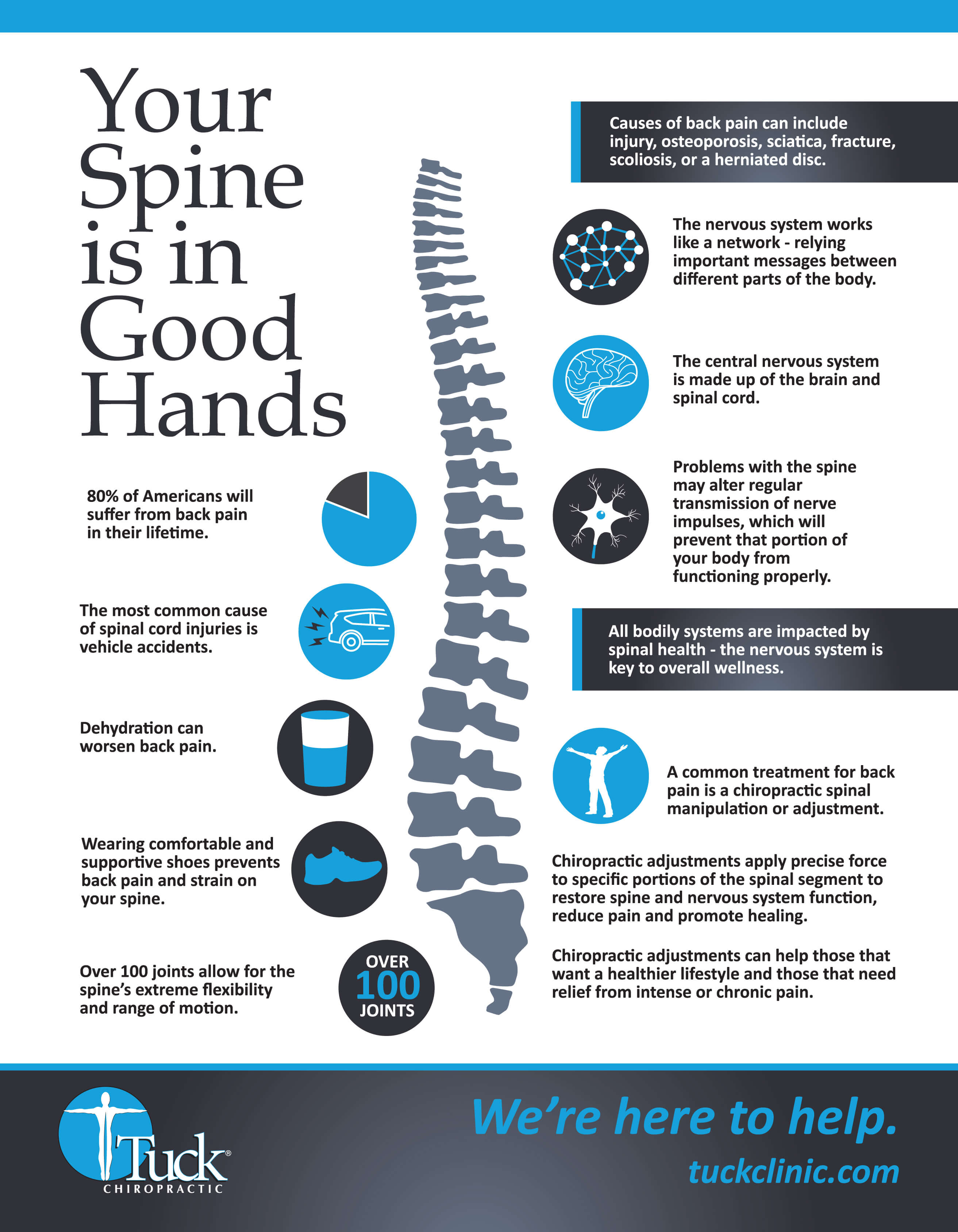Vital Daily Behaviors That Can Cause Back Pain And How To Steer Clear Of Them
Vital Daily Behaviors That Can Cause Back Pain And How To Steer Clear Of Them
Blog Article
Write-Up Produced By-Dyhr Secher
Preserving proper pose and preventing common mistakes in day-to-day tasks can dramatically impact your back health and wellness. From how you sit at your workdesk to exactly how you lift hefty objects, little adjustments can make a big distinction. Visualize a day without the nagging neck and back pain that impedes your every move; the option might be simpler than you believe. By making a few tweaks to your daily routines, you could be on your means to a pain-free presence.
Poor Posture and Sedentary Lifestyle
Poor position and a less active way of life are 2 significant contributors to neck and back pain. When you slouch or suspicion over while resting or standing, you put unnecessary pressure on your back muscle mass and back. This can lead to muscular tissue imbalances, stress, and ultimately, persistent neck and back pain. Additionally, sitting for extended periods without breaks or exercise can compromise your back muscular tissues and result in rigidity and discomfort.
To deal with poor posture, make an aware initiative to rest and stand directly with your shoulders back and lined up with your ears. Remember to keep your feet level on the ground and prevent crossing your legs for extensive durations.
Including regular stretching and strengthening exercises into your day-to-day routine can additionally aid enhance your pose and reduce back pain related to an inactive lifestyle.
Incorrect Training Techniques
Inappropriate training strategies can considerably contribute to back pain and injuries. When you lift heavy items, keep in mind to flex your knees and utilize your legs to raise, rather than relying upon your back muscular tissues. Stay clear of turning your body while training and keep the item near your body to decrease pressure on your back. click for info to preserve a straight back and prevent rounding your shoulders while raising to stop unneeded stress on your spinal column.
Always assess the weight of the item before lifting it. If it's too hefty, request help or usage devices like a dolly or cart to transport it safely.
Remember to take breaks throughout lifting jobs to give your back muscles a chance to rest and avoid overexertion. By implementing correct training strategies, you can stop pain in the back and minimize the risk of injuries, guaranteeing your back stays healthy and balanced and strong for the long-term.
Lack of Normal Workout and Extending
A less active lifestyle devoid of normal workout and extending can dramatically contribute to pain in the back and pain. When you do not engage in exercise, your muscles come to be weak and inflexible, resulting in inadequate pose and increased stress on your back. visit the following post strengthen the muscles that support your spinal column, improving stability and minimizing the risk of pain in the back. Incorporating extending right into your regimen can likewise improve flexibility, preventing stiffness and pain in your back muscular tissues.
To stay clear of back pain triggered by an absence of workout and extending, go for at least 30 minutes of moderate exercise most days of the week. Consist of spine pain causes that target your core muscle mass, as a solid core can help minimize stress on your back.
Furthermore, take breaks to stretch and relocate throughout the day, particularly if you have a desk work. Straightforward stretches like touching your toes or doing shoulder rolls can aid relieve tension and prevent neck and back pain. Focusing on routine exercise and extending can go a long way in maintaining a healthy back and reducing discomfort.
Final thought
So, keep in mind to stay up straight, lift with your legs, and remain active to stop back pain. By making straightforward changes to your daily behaviors, you can prevent the discomfort and constraints that feature pain in the back. Care for your spine and muscular tissues by practicing excellent stance, appropriate training strategies, and routine workout. Your back will thank you for it!
